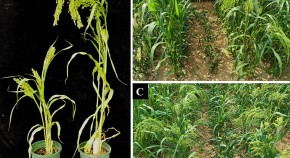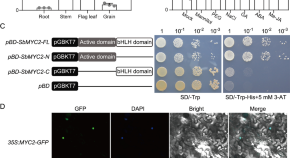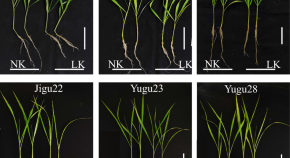Genetic linkage map construction and QTL analysis for plant height in proso millet (Panicum miliaceum L.)
Authors (first, second and last of 6)

Collection
Overview: Millets are climate resilient, nutritious, small-seeded grasses used mainly for food and feed. Besides sorghum [Sorghum bicolor (L.) Moench] and pearl millet [Pennisetum glaucum (L.) R. Br.], several other millets with local importance are grown around the world but remain little known to the broader scientific research community. These include for example finger millet, foxtail millet and teff along with barnyard, proso, kodo, little and browntop millets. 2023 has been declared the International Year of Millets by the Food and Agriculture Organization of the United Nations, making it a perfect opportunity to highlight important scientific breakthroughs and research in this special group of crops.
Aim: This Topical Collection provides an opportunity for researchers to publish original research and review articles on all key areas of trait discovery, characterization and validation across the broad spectrum of sorghum and millet species.
Scope: All manuscripts should have a clear genetic component, sufficient experimental data (in the case of original articles) and a significant potential impact on the improvement of sorghum and millets. Authors are encouraged to demonstrate the use of innovative breeding tools to improve millet crops and traits.
Damaris A. Odeny is a plant molecular breeder with a PhD in Plant Genetics from the University of Bonn (Germany). She completed a post-doctoral training at the Max Planck Institute for Plant Breeding Research in Cologne, Germany. She has led and implemented genomics projects in both cereals and legumes, including the development of genomic resources in several orphan crops. Damaris develops cutting edge genomic resources for all ICRISAT mandate crops in her current role. Prior to this, she worked at the Agricultural Research Council (ARC), South Africa, where she implemented molecular breeding for several indigenous crops.
Hai-Chun Jing, Group Leader, Sorghum Genomics and Molecular Breeding. He joined the Institute of Botany in 2008 through the Hundred Talent Programme of the Chinese Academy of Sciences and is currently a professor in the Key Lab of Plant Resources. He manages a research programme which emphasizes the genetic improvement of the C4 crop sorghum (Sorghum bicolour). His own expertise is in the areas of genetics, molecular biology and genomics, and he collaborates with scientists in plant breeding, bioinformatics and computer science.





